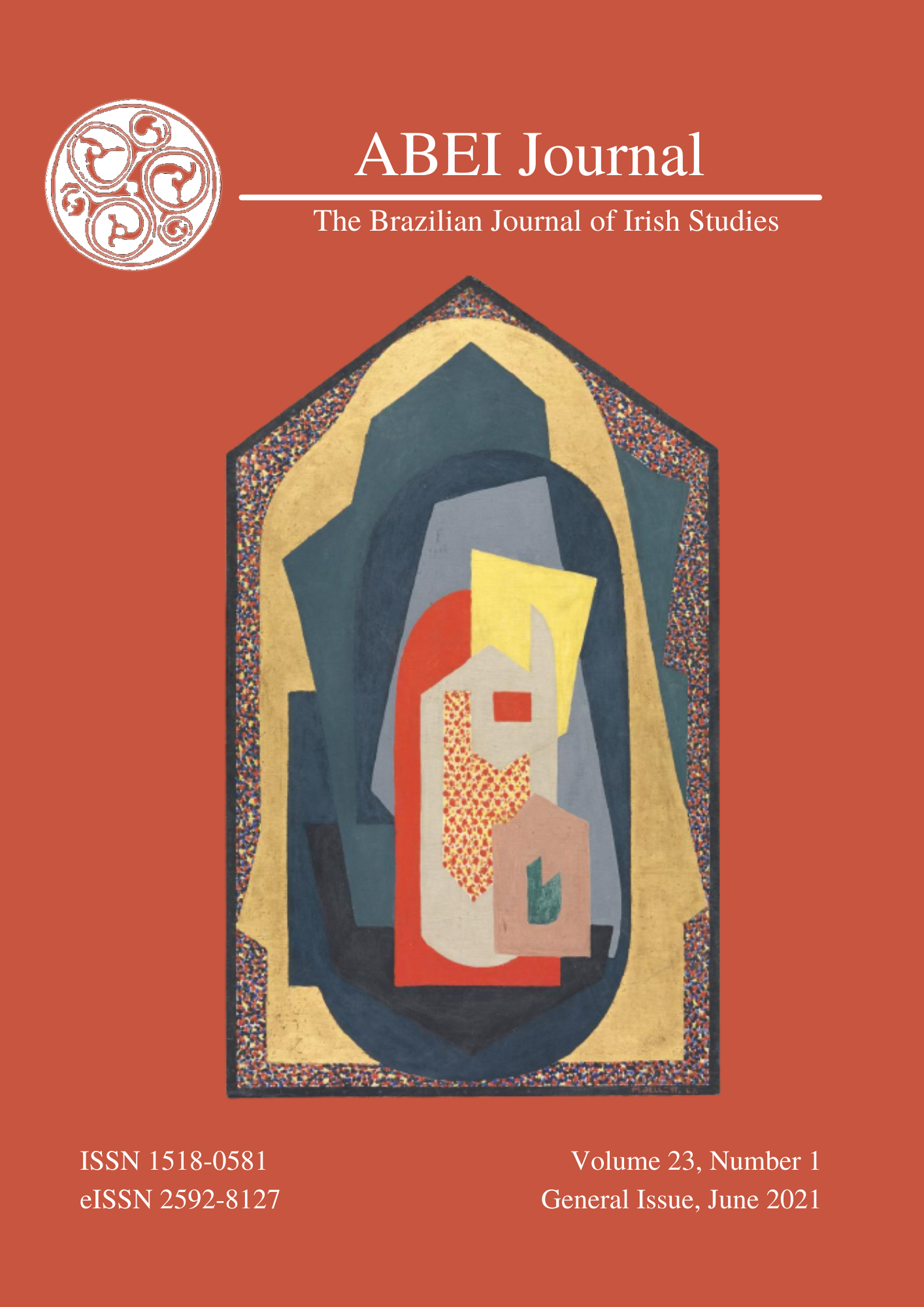The Evil is Inside the House and There is Nowhere to Run – Analysing the Representation of The Irish Family in The Canal (2014), By Ivan Kavanagh
DOI:
https://doi.org/10.37389/abei.v23i1.192588Parole chiave:
The Canal, Postmodern Horror, Family, Irish Horror CinemaAbstract
The Canal (2014) is an Irish horror film written and directed by Ivan Kavanagh. The story is about David, an archivist who believes a spirit murdered his wife, Alice. David’s mental condition is highly questionable, as for the police he is the main suspect of the investigation. In this film, Kavanagh portrays the domestic environment as unstable and violent. The narrative contrasts with Ireland’s familist ideology and perception of the family as a harmonious haven. According to Isabel Pinedo (1997), postmodern horror films explore the terrors of everyday life and blur the limits between good and evil. Places and individuals, previously considered safe and caring, can be associated with horrifying events. These contradictions raise the question of how Kavanagh portrayed the family in the postmodern horror paradigm. This study aims at analysing the representation of the Irish family in The Canal taking into account studies about the Irish family and cinema. The research method is content analysis, which is a technique to describe and examine the communicative material, in this case, a movie. Furthermore, the results of this study may contribute to the development of further research related to Ireland’s contemporary films and society.
Riferimenti bibliografici
Barrett, Ciara. “The Canal (Ivan Kavanagh 2014).” Estudios Irlandeses-Journal of Irish Studies 11 (2016): 282-285. 11 Oct. 2020. <https://go.gale.com/ps/i.do?id=GALE%7CA458549974&sid=googleScholar&v=2.1&it=r&linkaccess=abs&issn=1699311X&p=AONE&sw=w>.
Breathnach, Paddy. Shrooms. 2007. Available in: Google Play. Access in: October 11, 2020.
Crosson, Seán. “Horror, hurling, and Bertie: aspects of contemporary Irish horror cinema”. Kinema, 2012.
Dunkling, Leslie. Collins Dictionary Of Surnames: From Abbey to Mutton, Nabbs to Zouch. HarperCollins UK, 2014.
Elley, Derek. “Shrooms.” Variety, 23 Aug. 2007, https://variety.com/2007/film/reviews/shrooms-1200556994/. Access in: October 1, 2020.
Kavanagh, Ivan. The Canal. 2014. Available in: Google Play. Access in: October 10, 2020.
Kavanagh, Ivan. Tin Can Man. 2007. Available in: Google Play. Access in: October 1, 2020.
Kennedy, Sinead. “Irish women and the Celtic Tiger economy”. In: The end of Irish history?. Manchester University Press, 2003.
McCullagh, Ciaran. “A tie that blinds: Family and ideology in Ireland.” Economic and Social Review 22.3 (1991): 199-211.
McMahon, Conor. Dead Meat. 2003. Available in: Google Play. Access in: October 10, 2020.
McMahon, Conor. Stitches. 2012. Available in: Google Play. Access in: October 10, 2020.
Miska, Brad. “[Review] Clown Slasher ‘Stitches’ Destined To Become A Cult Classic!!”.
Bloody Disgusting!, 18 Oct. 2012, https://bloody-disgusting.com/reviews/3197240/bdreview-clown-slasher-stitches-destined-to-become-a-cult-classic/. Access in: October 1, 2020.
Modleski, Tania. The terror of pleasure: The contemporary horror film and postmodern theory. Indiana University, 1986.
Newman, Kim. "Irish horror cinema." Irish Gothic Journal 1 (2006): 3-11. 15 Ago. 2020.
<https://search.proquest.com/openview/720cd00e638a95ad4ddb12ec84b6c927/1?pqorigsite= gscholar&cbl=2035804>.
Norris, Michelle. Property, family and the Irish welfare state. Springer, 2016.
O'Connell, Dióg. New Irish storytellers: narrative strategies in film. Intellect Books, 2010.
Pinedo, Isabel Cristina. Recreational terror: Women and the pleasures of horror film viewing. SUNY Press, 1997.
Regan, Aidan; Brazys, Samuel. “Celtic phoenix or leprechaun economics? The politics of an FDI-led growth model in Europe”. New Political Economy, 23.2 (2018): 223-238. 19 Set. 2020.<https://www.tandfonline.com/doi/abs/10.1080/13563467.2017.1370447>.
Ryan, Marita. “Sounding Different Notes: Approaching the Other through Music in John Carney’s FIlm Once”. Otherness: Essays and Studies, 1.1 (2010), 1-16. 18 Set. 2020.<https://www.otherness.dk/fileadmin/www.othernessandthearts.org/Publications/Journal_Otherness/Otherness__Essays_and_Studies_1.1 Sounding_Different_Notes.pdf>.
Yeats, William Butler. Stories of Red Hanrahan (English Version). A Public Domain Book, 1907.
Dowloads
Pubblicato
Fascicolo
Sezione
Licenza
Copyright (c) 2021 Sanio Santos

Questo volume è pubblicato con la licenza Creative Commons Attribuzione - Non commerciale 4.0 Internazionale.


